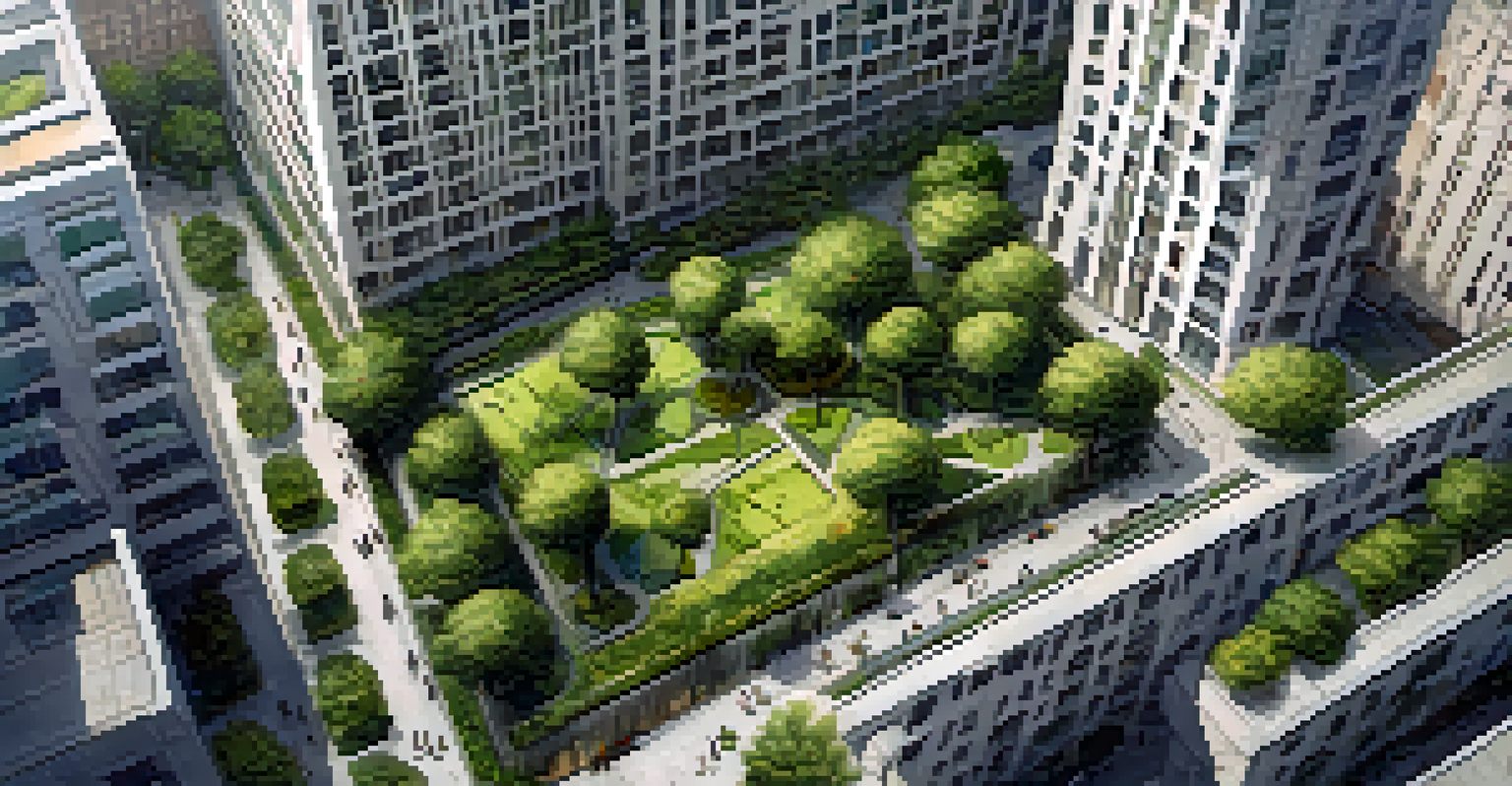Urban Trees: Key Players in City Ecosystem Health and Balance

The Importance of Urban Trees in City Life
Urban trees are more than just pretty sights; they play a crucial role in enhancing the quality of life in cities. They provide shade on hot days, making outdoor spaces more enjoyable and inviting. Additionally, trees help to improve air quality by absorbing pollutants and releasing oxygen, which is vital for our health and well-being.
The best time to plant a tree was twenty years ago. The second best time is now.
In bustling urban environments, trees also serve as natural sound barriers, absorbing noise pollution from traffic and construction. This can lead to a more peaceful living experience for city dwellers. Furthermore, their presence can increase property values, making neighborhoods more desirable.
Beyond aesthetics and comfort, urban trees contribute to biodiversity, providing habitats for various wildlife species. This interaction between urban vegetation and wildlife fosters a balanced ecosystem, enriching city life in ways that often go unnoticed.
How Urban Trees Combat Climate Change
Urban trees act as powerful allies in the fight against climate change. By sequestering carbon dioxide, they help to reduce greenhouse gases in the atmosphere, which is crucial for slowing global warming. A single mature tree can absorb approximately 48 pounds of CO2 annually, making their presence in cities even more significant.

Moreover, trees can mitigate the urban heat island effect, where cities become significantly warmer than their rural surroundings due to human activities. By providing shade and releasing moisture into the air through a process called transpiration, trees help cool down city landscapes, reducing the need for energy-intensive air conditioning.
Urban Trees Enhance City Life
Urban trees provide shade, improve air quality, and increase property values, significantly enriching city living.
As cities continue to grow and temperatures rise, integrating more trees into urban planning becomes essential. Their ability to combat heat and improve air quality not only benefits the environment but also enhances the overall livability of urban areas.
Trees and Their Role in Urban Water Management
Urban trees play a pivotal role in managing stormwater runoff, which can lead to flooding and water pollution. Their roots help to absorb rainwater, reducing the amount of runoff that enters storm drains. This natural filtration process not only decreases the risk of flooding but also improves water quality by filtering pollutants.
He that plants trees loves others besides himself.
Additionally, tree canopies intercept rainwater, allowing it to evaporate before it hits the ground. This process can significantly reduce the volume of water that needs to be managed by city infrastructure during heavy rains. By reducing the strain on stormwater systems, trees contribute to more sustainable urban environments.
Incorporating green infrastructure, like trees, into urban planning can enhance resilience against climate-related challenges. This not only protects city landscapes but also safeguards local waterways and ecosystems, creating a healthier environment for all.
Enhancing Urban Aesthetics with Green Spaces
The presence of trees in urban landscapes can vastly improve the aesthetic appeal of a city. Parks, tree-lined streets, and green rooftops create inviting spaces that encourage outdoor activities and community interaction. Such environments can transform the feel of a city from chaotic to serene.
Moreover, studies have shown that green spaces can positively impact mental health. Spending time in nature, even in small urban parks, can reduce stress and promote well-being. Trees and greenery provide a mental escape from the hustle and bustle of city life, allowing residents to recharge.
Trees Combat Climate Change
By sequestering carbon and cooling urban areas, trees play a vital role in mitigating climate change effects.
By prioritizing urban greenery, cities can foster a sense of community and belonging. Events like tree planting days not only beautify neighborhoods but also bring residents together, strengthening social ties and promoting environmental stewardship.
Urban Trees as Biodiversity Hotspots
Urban areas are often thought of as biodiversity deserts, but trees can significantly enhance urban wildlife habitats. By providing food and shelter, urban trees attract birds, insects, and other wildlife that contribute to a thriving ecosystem. This biodiversity is essential for maintaining ecological balance.
Moreover, trees can create corridors for wildlife movement, allowing species to thrive even in densely populated areas. These green corridors can connect fragmented habitats, enabling animals to find mates, food, and shelter, which is crucial for their survival.
Encouraging biodiversity through urban trees also has broader implications for environmental health. A diverse ecosystem is more resilient to diseases and pests, helping to sustain urban environments in the long run.
Community Engagement Through Urban Forestry
Community engagement is vital in promoting urban forestry initiatives. When residents are involved in tree planting and care, they develop a sense of ownership and pride in their environment. This engagement can lead to more sustainable practices and a greater appreciation for the natural world.
Local workshops and educational programs can empower communities to understand the importance of trees and how to care for them. By fostering this knowledge, cities can create a network of advocates for urban forestry, ensuring that trees are cared for and maintained.
Trees Foster Community Engagement
Community involvement in tree planting initiatives strengthens social ties and promotes environmental stewardship.
Additionally, community-driven initiatives can lead to healthier urban spaces. When people come together to plant and nurture trees, they not only improve their surroundings but also strengthen social bonds, creating a more connected and resilient community.
Future Trends in Urban Tree Management
As urbanization continues to rise, the approach to tree management is evolving. Cities are increasingly recognizing the need for strategic tree planting and maintenance to enhance urban ecosystems. This includes selecting tree species that are resilient to climate change and urban stressors.
Technological advancements are also shaping the future of urban forestry. Tools such as geographic information systems (GIS) help city planners identify areas for tree planting and monitor tree health over time. This data-driven approach enables more effective management and ensures that urban trees thrive.

Moreover, cities are beginning to integrate trees into their climate action plans. By acknowledging the multifaceted benefits of trees, urban planners can prioritize green infrastructure that supports both environmental health and community well-being, paving the way for a greener future.